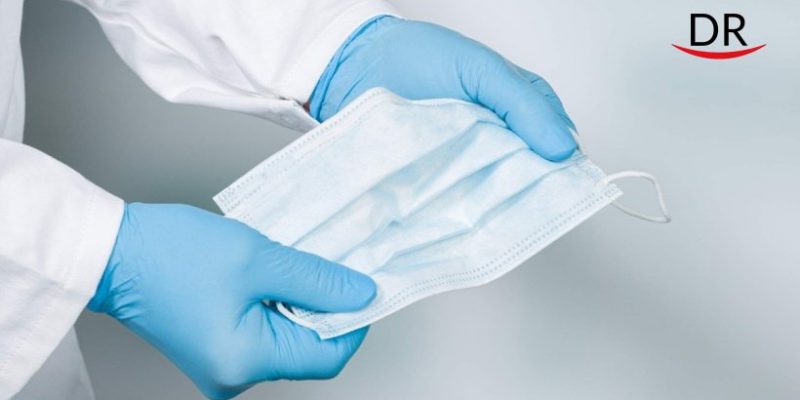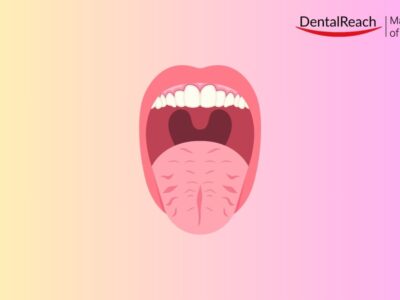In the light of WHO declaring COVID-19 virus to be a pandemic Indian Dental Association (IDA) recommends preventative measures for dental professionals to minimize transmission — as scientific information leads to improvements in infection control, risk assessment, and disease management.
Possible transmission routes of 2019-nCoV in dental clinics
Virus can be passed directly from person to person by respiratory droplets; emerging evidence suggested that it may also be transmitted through contact and fomites. Dental patients and professionals can be exposed to pathogenic microorganisms, including viruses and bacteria that infect the oral cavity and respiratory tract. Dental care settings invariably carry the risk of infection due to the specificity of its procedures, which involves face-to-face communication or direct transmission (cough, sneeze, and droplet inhalation transmission) and contact transmission (contact with oral, nasal, and eye mucous membranes). In addition, studies have shown that respiratory viruses can be transmitted from person to person through direct or indirect contact, or through coarse or small droplets, and 2019-nCoV can also be transmitted directly or indirectly through saliva.
Dental patients and professionals can be exposed to pathogenic microorganisms, including viruses and bacteria that infect the oral cavity and respiratory tract. Dental care settings invariably carry the risk of
2019-nCoV infection due to the specificity of its procedures, which involves face-to-face communication
with patients, and frequent exposure to saliva, blood, and other body fluids, and the handling of sharp instruments. The pathogenic microorganisms can be transmitted in dental settings through inhalation of airborne microorganisms that can remain suspended in the air for long periods, direct contact with blood, oral fluids, or other patient materials, contact of conjunctival, nasal, or oral mucosa with droplets and aerosols containing microorganisms generated from an infected individual and propelled a short distance by coughing and talking without a mask, and indirect contact with contaminated instruments and/or environmental surfaces.
Minimize Chance for Exposures
- Post a sign at the entrance to the dental practice which instructs patients having symptoms of a respiratory infection (e.g., cough, sore throat, fever, sneezing, or shortness of breath) to please reschedule their dental appointment and call their physician. The same thing applies if they have had any of these symptoms in the last 48 hours.
- Reschedule appointment if your patients have traveled outside India in the last two weeks to an area affected by the coronavirus disease. This includes China, Hong Kong, Iran, Italy, France, Spain, Germany, Japan, Singapore, South Korea, Taiwan, Thailand, Vietnam or any other COVID19 affected country.
- Take a detailed travel and health history when confirming and scheduling patients. Do not provide non-emergent or cosmetic treatment to above patients and report them to health department immediately. Screen patients for travel and signs and symptoms of infection when they update their medical histories.
- Incorporate questions about new onset of respiratory symptoms into daily assessments of all patients.
- Take temperature readings as part of the routine assessment of patients before performing dental procedures.
- Take the contact details and address of all patients treated.
- Install physical barriers (e.g., glass or plastic windows) at reception areas to limit close contact with potentially infectious patients.
- Make sure the personal protective equipment being used is appropriate for the procedures being performed.
- Use a rubber dam when appropriate to decrease possible exposure to infectious agents.
- Use high-speed evacuation for dental procedures producing an aerosol.
- Autoclave hand-pieces after each patient.
- Have patients rinse with a 1% hydrogen peroxide solution before each appointment.
- Clean and disinfect public areas frequently, including door handles, chairs and bathrooms.
Post visual alerts icon (e.g., signs, posters) at the entrance and in strategic places (e.g., waiting areas, elevators, cafeterias) to provide patients with instructions (in appropriate languages) about hand hygiene, respiratory hygiene, and cough etiquette. Instructions should include how to use tissues to cover nose and mouth when coughing or sneezing, to dispose of tissues and contaminated items in waste receptacles, and how and when to perform hand hygiene.
Provide supplies for respiratory hygiene and cough etiquette, including alcohol-based hand rub (ABHR) with 60-95% alcohol, tissues, and no-touch receptacles for disposal, at entrances, waiting rooms, and patient check-ins.
Risk Assessment is Critical
Dental personnel should be alert and identify patients with an acute respiratory illness when they arrive, give them a disposable surgical face mask to wear and isolate them in a single-patient room.
Airborne Spread
The dental papers show that many dental procedures produce aerosols and droplets that are contaminated with virus. Thus, droplet and aerosol transmission of 2019-nCoV are the most important concerns in dental clinics and hospitals, because it is hard to avoid the generation of large amounts of aerosol and droplet mixed with patient’s saliva and even blood during dental practice. In addition to the infected patient’s cough and breathing, dental devices such as high-speed dental hand-piece uses high-speed gas to drive the turbine to rotate at high speed and work with running water. When dental devices work in the patient’s oral cavity, a large amount of aerosol and droplets mixed with the patient’s saliva or even blood will be generated. Particles of droplets and aerosols are small enough to stay airborne for an extended period before they settle on environmental surfaces or enter the respiratory tract. Thus, the 2019-nCoV has the potential to spread through droplets and aerosols from infected individuals in dental clinics and hospitals.
Facial Protection
Avoid touching the eyes, nose, and mouth with unwashed hands.
- Wear a surgical or procedure mask and eye protection (face shield, goggles) to protect mucous membranes of the eyes, nose, and mouth during activities that are likely to generate splashes or sprays of blood, body fluids, secretions, and excretions.
Gown
Wear to protect skin and prevent soiling of clothing during activities that are likely to generate splashes or sprays of blood, body fluids, secretions, or excretions.
- Remove soiled gown as soon as possible, and perform hand hygiene.
Linens
- Handle, transport, and process used linen in a manner which: prevents skin and mucous membrane exposures and contamination of clothing.
- Avoids transfer of pathogens to other patients and or the environment.
Hand Hygiene
Wash hands with soap and water for at least 20 seconds after contact with patients or use an alcohol-based hand sanitizer with at least 60% alcohol if soap and water are not available. (These recommendations already are part of Standard Precautions.)

- Before and after any direct patient contact and between patients, whether or not gloves are worn.
- Immediately after gloves are removed. Before handling an invasive device.
- After touching blood, body fluids, secretions, excretions, non-intact skin, and contaminated items, even if gloves are worn.
- During patient care, when moving from a contaminated to a clean body site of the patient.
- After contact with inanimate objects in the immediate vicinity of the patient.
Respiratory Hygiene and Cough Etiquette
Persons with respiratory symptoms should:
- Cover their nose and mouth when coughing/sneezing with tissue or mask,
- Provide tissues and no-touch receptacles to throw away used tissues and offering face masks to patients who are coughing.
- Dispose of used tissues and masks, and perform hand hygiene after contact with respiratory secretions.
- Dental personnel should use N95 respirators or respirators that offer a higher level of protection instead of a facemask when performing or present for an aerosol-generating procedure
Waste Disposal
- Ensure safe waste management.
- Treat waste contaminated with blood, body fluids, secretions and excretions as clinical waste, in accordance with local regulations. Human tissues and laboratory waste that is directly associated with specimen processing should also be treated as clinical waste. Discard single use items properly
Patient Care Equipment
Offices also should follow routine cleaning and disinfection strategies used during flu season.
- Handle equipment soiled with blood, body fluids, secretions, and excretions in a manner that prevents skin and mucous membrane exposures, contamination of clothing, and transfer of pathogens to other patients or the environment.
- Clean, disinfect, and reprocess reusable equipment appropriately before use with another patient.
Train and Educate Personnel
- Provide task-specific education and training on preventing transmission of infectious agents, including refresher training.
However, following IDA’s recommendations will reduce exposure and add a layer of protection in an already high exposure career. We wish you stay proactive, informed and calm, to provide patients with the best dental care we have always provided. Stay safe out there.
Dr. Ravindar Singh, President, IDA
Dr. Ashok Dhoble, Hon. Sec General, IDA
Source: www.ida.org.in
Declaration/Screening form for COVID19 Infection





















Comments